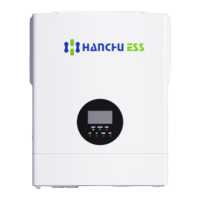What to do if HANCHU ESS HOME-ESS-HV-5.3K shows Over Voltage Alarm?
- FfwilliamsAug 20, 2025
If your HANCHU ESS Inverter displays an Over Voltage Alarm, it means the battery voltage is too high. The solution is to wait for the battery voltage to return to a normal level.

